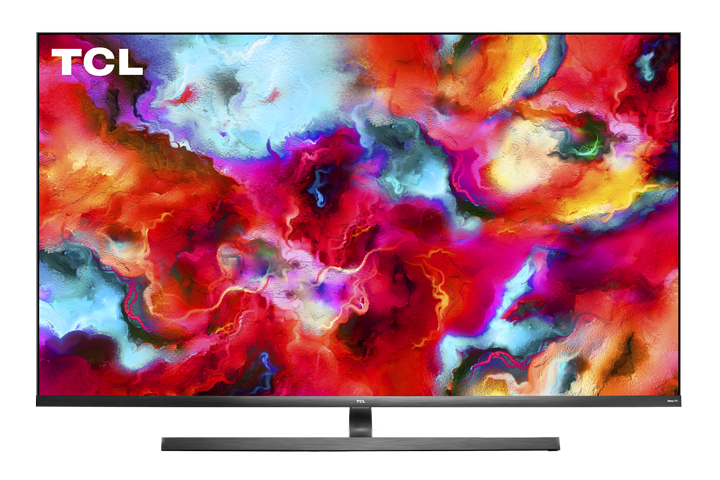What is CEC and What Does it Do?
Consumer Electronics Control, commonly known as CEC, is a feature in the HDMI standard that allows for interoperability and control of multiple devices through a single remote control. CEC is part of the HDMI standard, specifically introduced in HDMI version 1.2a and later refined with subsequent updates. It has become an essential tool in modern home entertainment systems, helping simplify the user experience by reducing the need for multiple remotes and streamlining device interactions. Here's an overview of what CEC is and how it can transform a multi-device setup into a unified, user-friendly system.
Understanding CEC: The Basics
CEC, or Consumer Electronics Control, is a protocol within the HDMI standard that enables HDMI-connected devices to send and receive commands through a single HDMI cable. In simpler terms, CEC lets compatible devices talk to each other. When multiple devices, such as a television, Blu-ray player, game console, or sound system, are connected via HDMI, CEC allows them to communicate, synchronize certain functions, and be controlled by a single remote.
How Does CEC Work?
CEC-enabled devices communicate through a shared HDMI cable, meaning there is no need for additional wiring. Each device equipped with CEC capabilities can receive and send specific commands, such as turning on or off, adjusting volume, switching inputs, or even playing and pausing media.
The commands are transmitted over a single wire (pin 13) in the HDMI cable, which allows for seamless integration of commands across devices without additional network configurations or IR (infrared) receivers. Each HDMI device typically comes with a unique CEC address, enabling smooth command exchanges without overlap or interference among multiple connected devices.
CEC Features and Functions
CEC offers a range of convenient features, enhancing both the accessibility and functionality of interconnected devices:
One-Touch Play: With one press of a button, you can turn on multiple devices and switch to the correct input. For example, turning on your Blu-ray player can automatically power on the television and switch it to the correct HDMI input.
System Standby: When you turn off one device, such as your TV, other connected devices, like sound systems or game consoles, can be set to power down simultaneously. This helps conserve energy and makes powering down devices more convenient.
Remote Control Pass-Through: CEC allows a single remote control to operate multiple devices. For instance, you can control your TV’s volume or change inputs without switching remotes, as the commands are relayed through the HDMI CEC-enabled connection.
Device Menu Control: Some CEC setups enable you to access device-specific menus using a single remote, making navigation between devices much easier and reducing the clutter of individual remotes for each device.
Audio Control: If you have a sound system or soundbar, CEC can control audio output settings, such as volume adjustment, muting, and even audio input selection, directly from the TV’s remote.
CEC Naming Conventions
Though CEC is standardized across HDMI-capable devices, manufacturers often use different names for this feature. Here are some common brand-specific names for CEC:
- Samsung: Anynet+
- Sony: BRAVIA Sync
- LG: SimpLink
- Panasonic: VIERA Link
- Sharp: Aquos Link
- Toshiba: CE-Link or Regza Link
- TCL: T-Link
Regardless of the branding, these CEC features generally offer the same fundamental functionality across various devices, enabling them to work together seamlessly.
Benefits of CEC
CEC has revolutionized the way we interact with home entertainment setups. Here are a few key benefits:
Simplifies Control: With CEC, users don’t need to juggle multiple remotes. A single remote can control essential functions across multiple devices, streamlining the entire user experience.
Saves Power: By enabling the simultaneous shutdown of devices through System Standby, CEC helps reduce unnecessary power consumption when devices are not in use.
Enhances Convenience: The ability to power on devices and switch to the correct input automatically reduces the steps required to set up a session, such as watching a movie or playing a game.
Reduces Clutter: Since CEC removes the need for additional remote controls and simplifies setup, it helps reduce the clutter associated with a multi-device home theater setup.
Limitations of CEC
While CEC is highly useful, it does have limitations:
Compatibility: Not all HDMI devices are CEC-enabled, and even when they are, some manufacturers implement the feature differently. This can lead to inconsistent functionality across devices from different brands.
Limited Range of Commands: CEC controls are usually limited to basic functions. While it can handle power, input switching, and volume, more advanced commands might still require device-specific remotes.
Variable Names: Since different manufacturers use different names for CEC, users may find it confusing to locate and activate the feature on their devices.
Lag: Occasionally, there may be a delay when sending commands between devices. This is typically minimal but can be noticeable with certain setups.
How to Enable CEC
Activating CEC on your devices usually involves a few simple steps:
Locate the CEC Option: This option is often found in the settings menu, labeled under the brand-specific CEC name (like Anynet+, BRAVIA Sync, T-Link, etc.).
Enable CEC: Toggle the CEC option on. This will allow your device to send and receive CEC commands.
Test and Configure Devices: Make sure that all connected devices are CEC-enabled, and verify that they are recognized in your TV or receiver’s device list. You may need to enable CEC on each individual device.
Conclusion
CEC is a powerful and often underutilized feature of HDMI that offers substantial benefits for controlling multiple devices with ease. By linking together a variety of devices under a single remote, CEC simplifies the management of home entertainment systems, minimizes the clutter of remotes, and makes setting up and operating multiple devices much easier. Whether it’s automatically turning on your TV when you play a Blu-ray, adjusting audio through your TV remote, or simplifying navigation across devices, CEC provides a seamless, streamlined experience, making it a highly valued feature in modern entertainment systems.
